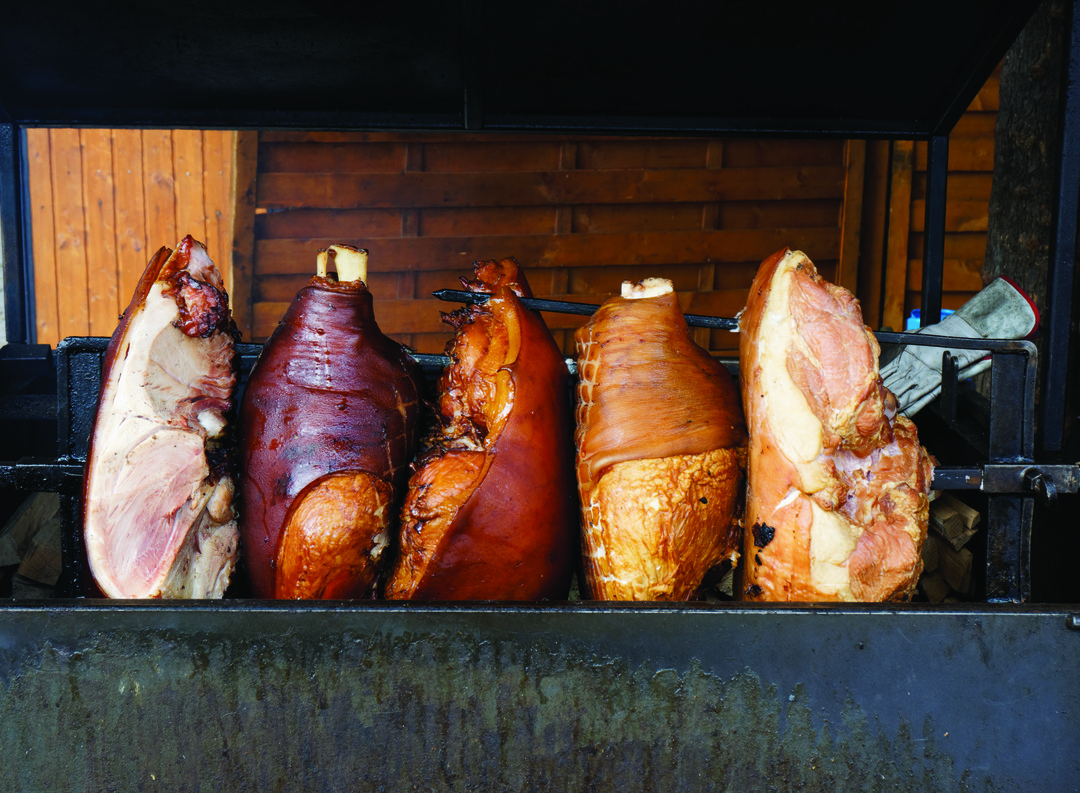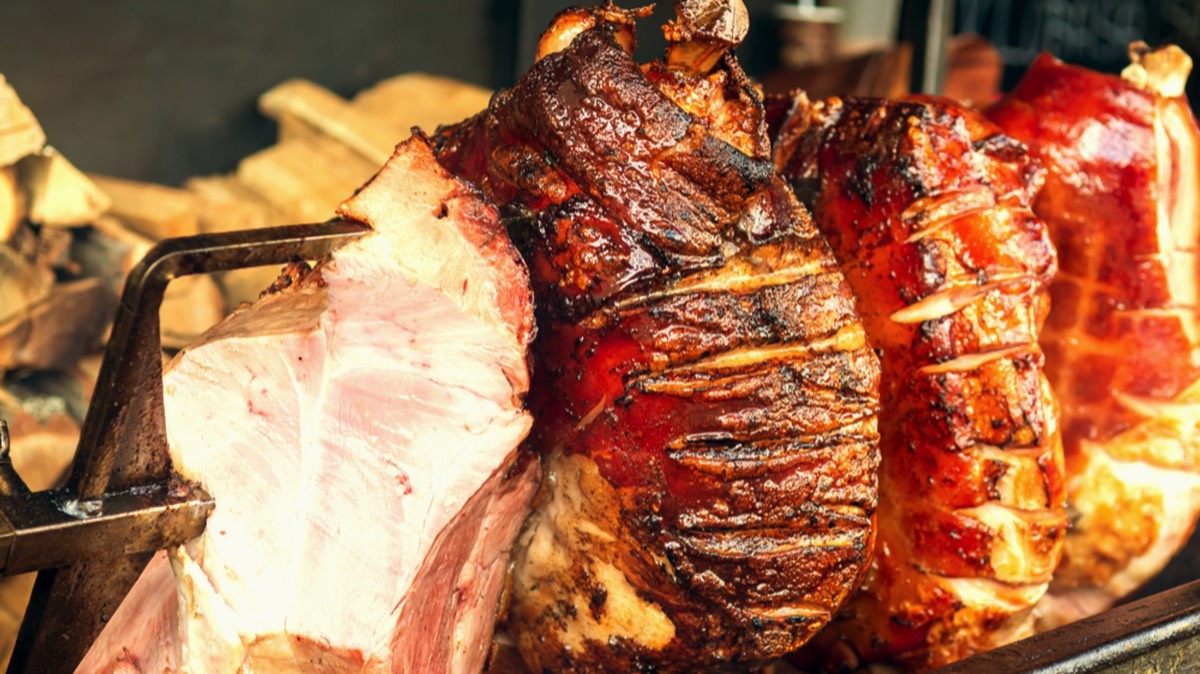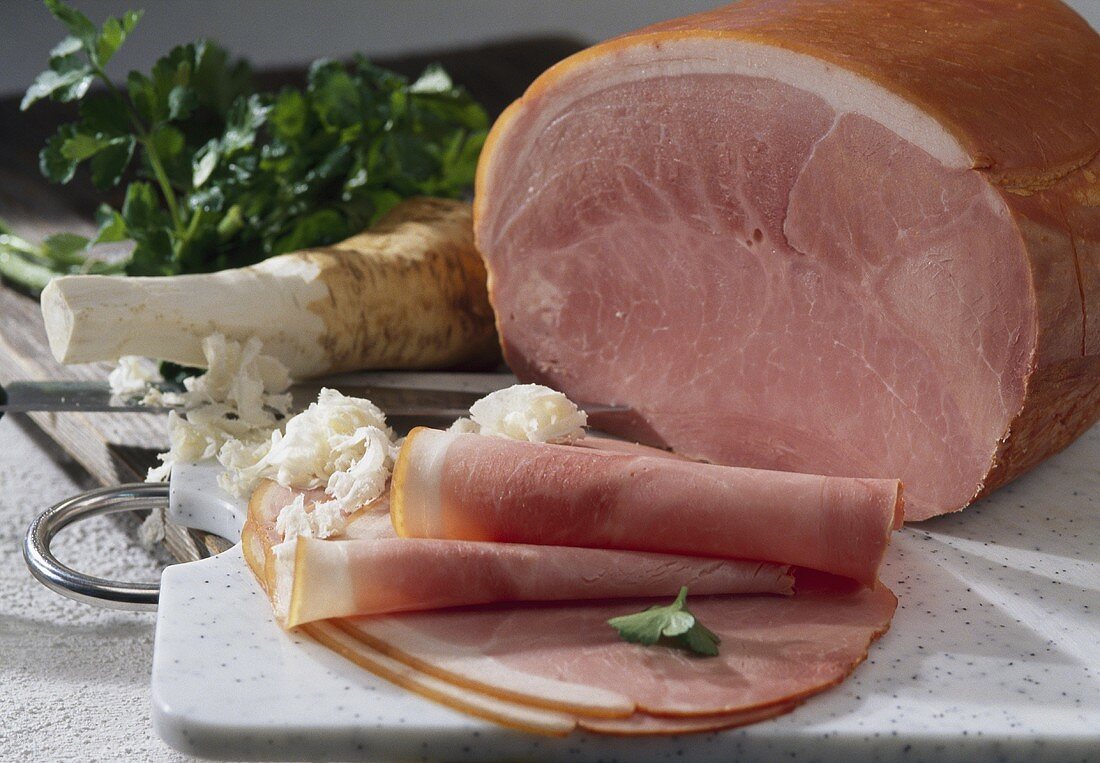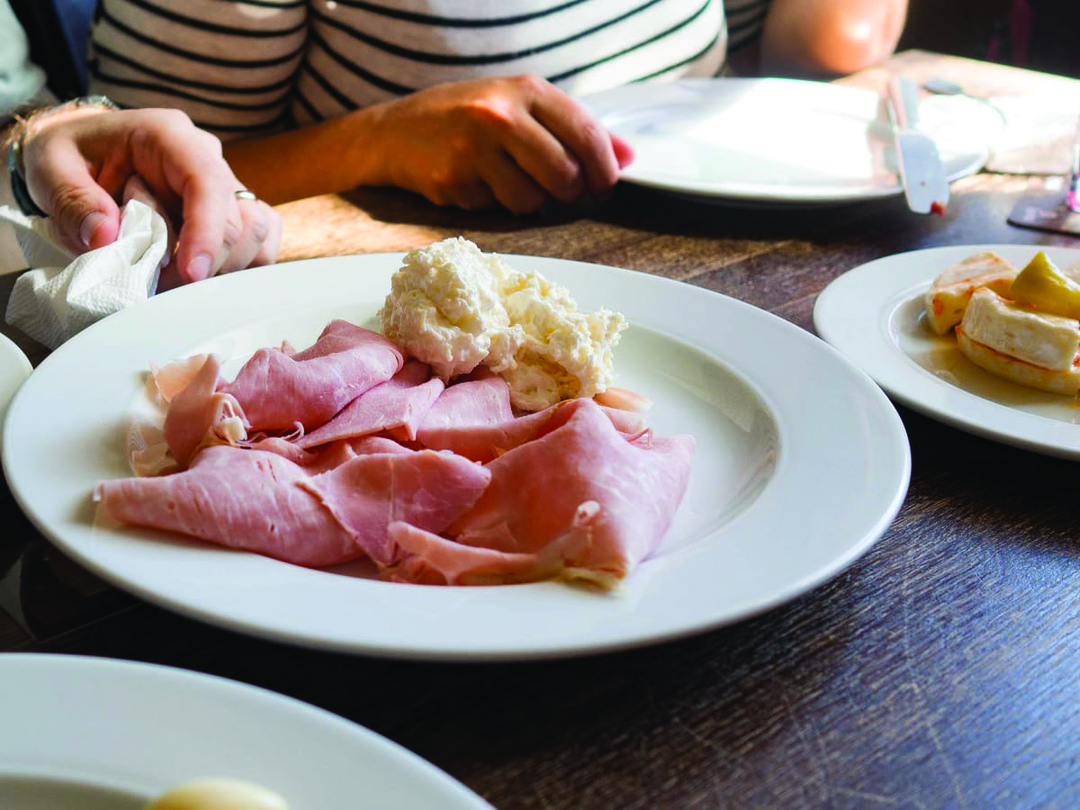Prague Ham
A cooked ham of the highest quality
Prague ham, the most admired of Central European ham, is made with the same recipe since 1857. Also, know as: Pragaschinken, Checa Pražská SUNKA, is a famously cooked ham of Czech cuisine. It is traditionally served hot as a main dish. For a century and a half, saying Prague ham in the Czech Republic means a cooked ham of the highest quality.
The Prague ham was invented in 1857 by the butcher František Zvěřina, who devised a way to prepare the thigh of the pig based on a preliminary cleaning and molded with the so-called Prague cut, a light smoked afterward that would preserve the aroma of fresh meat and a final point with not too aggressive cooking.
The recipe has remained basically the same to this day. The method consists to add salt to the entire thigh of a small pig then passed through a soft brine before being lightly smoked over beech coals, a process that results in the softest of the smoked hams to boil.
1879 the butcher Antonín Chmel began the industrial production of this specialty, which meant a great boost in its dissemination. This began to be distributed throughout the Austro-Hungarian Empire and a good part from abroad.

The original recipe remains the same for all types of ham. Today we recognize three types. One is the Prague ham with bone, which includes the entire thigh including the bone, and another is the boneless ham, which includes all kinds of modifications, retaining the original shape but without the bone. And finally a canned Prague ham. For each, there is a traditional recipe that really comes from the original, which was used in the 19th century, although of course with the use of modern technologies. Contrary to what one might think, technological development and the industrialization of the process have not altered the basic recipe that characterizes Prague ham.

In the early days, hams were put in oak vats, where they were preserved in marinated for 14 days. At present this is no longer possible, due to hygiene regulations. New technologies are now being used, such as spray lines, which shorten the process to 24 hours.
Different versions of the recipe arose, only in Prague was the František Zvěřina method still respected. What did occur was a diversification of the end product. The mutations of this product, however, have now come to an end. The European Union has agreed with the Czech butchers and has included Prague ham on the list of Guaranteed Traditional Specialties. The product can be made in Slovakia, in the Czech Republic, anywhere in Europe, but have to follow the original recipe. No producer from another country will not be able to say that their ham is Prague ham when it is really another product.




